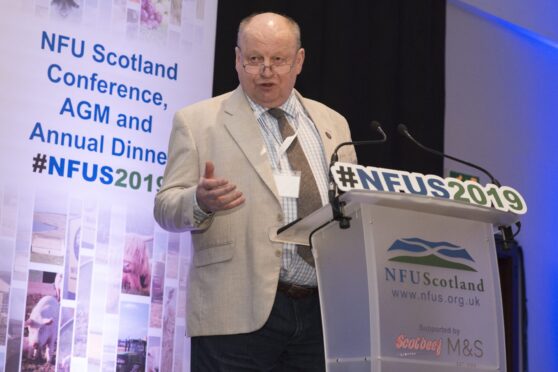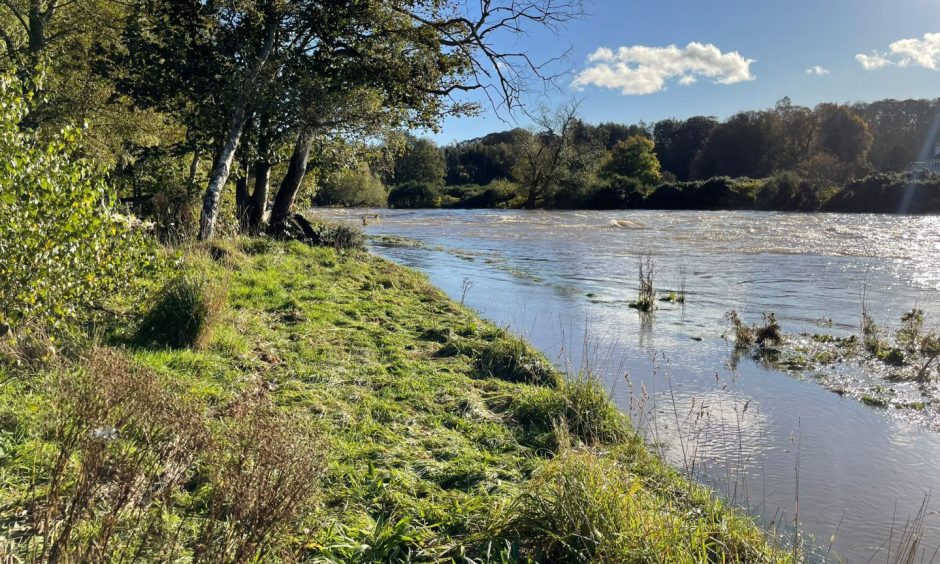Aberdeenshire farmer Patrick Sleigh has said the causes of the recent floods throughout the country must be addressed immediately.
Mr Sleigh, who farms near Oldmeldrum, has argued that the agricultural community is “heavily regulated” by the Water Framework Directive (WFD).
He says farmers want to get back to maintaining the watercourses as they used to so capably do.
“The WFD is a perfectly sensible piece of legislation however, the management or might I suggest, mismanagement of WFD by our government officials appears to protect and value the livelihoods of fresh pearl water mussels and such like, at the expense of humans,” said Mr Sleigh.
“Farmers understand and respect the WFD legislation and simultaneously completely value nature and the preservation of land, fresh water and marine habitats.
‘Farmers want to get back to maintaining watercourses as they used to capably do’ says Patrick Sleigh
“They also understand that WFD stipulates that the General Binding Rules within this legislation should be practiced at all times, unless there is a threat to human lives or properties.
“Which part of this WFD do our governments and enforcement officers not comprehend? When farmers were permitted to remove excess gravel and sand from the watercourses, this released much greater volume within the river channel, and therefore extra space for flooding water to occupy instead of overflowing into peoples’ properties.
“Politicians and councillors along with the environmental organisations can no longer be allowed to sit on their laurels hiding behind policy – much of which they clearly do not fully understand.”
He says farmers were previously permitted to cleanse watercourses at pinch points where gravel and sand banks built up.
“This maintenance was simple and managed at times to minimize any damage to spawning fish and other species,” said Mr Sleigh.
“The gravel materials were removed from the water and often used to help repair roads and tracks. This exercise was carried out by farmers using their own time, labour, fuel and machinery, at no cost to governments or local authorities.”
‘Politicians, councillors and environmental organisations hiding behind policy’
Mr Sleigh recalled on the Somerset floods in 2014 when the environmental agency was forced to allow sedimentation management/dredging of the main water courses to help relieve the pressure which was being put upon the flood banks.
He spoke of how a Herefordshire farmer was sent to prison for cleaning the River Lugg, rather than receiving a written apology and being presented with a medal for using his ”common sense” and ”expertise” to prevent excessive damage to property and livelihoods.
Mr Sleigh said: “Let’s work together as communities and show the government and officials that we have a better, cheaper plan and drive positive change.
“Together we can help to mitigate these horrific situations by reducing the volume . power and frequency of flood waters. We absolutely must react now and ensure this type of disaster is minimized going forward.”
‘Let’s work together to mitigate horrific situations’
Nathan Critchlow-Watton, Head of Water and Planning at the Scottish Environment Protection Agency (SEPA) said: “While dredging can play a role, it’s not always effective in reducing water levels and can increase flood risk and erosion damage downstream, as well as causing serious environmental damage.
“We encourage early dialogue with anyone wishing to undertake works in a watercourse. Any applications for river works would be carefully assessed and we would engage with potential applicants to provide advice on legislative requirements. Certain maintenance activities, such as sediment removal 10m either side of a closed culvert can be carried out without contacting SEPA, providing the appropriate general binding rules are followed.”











